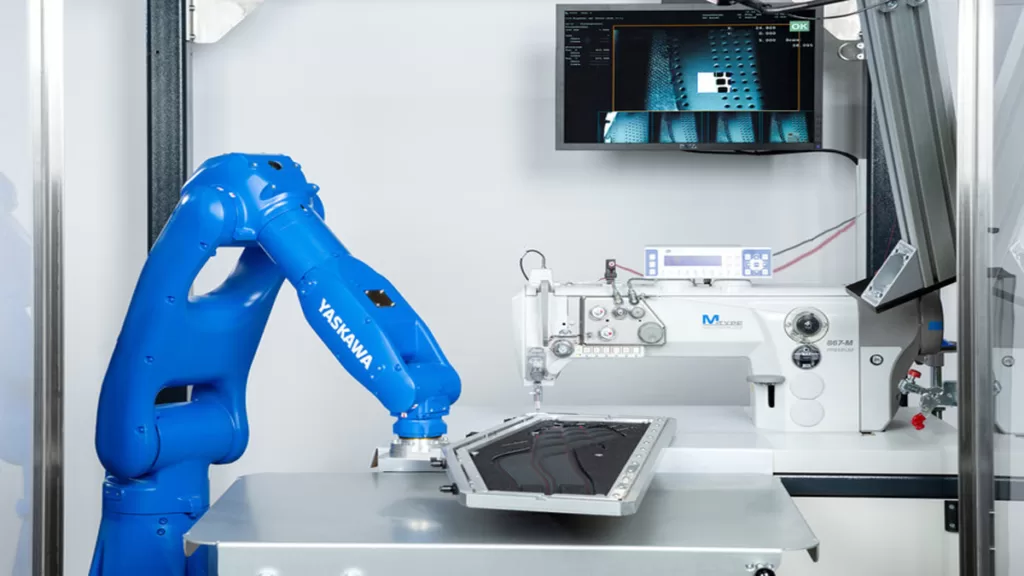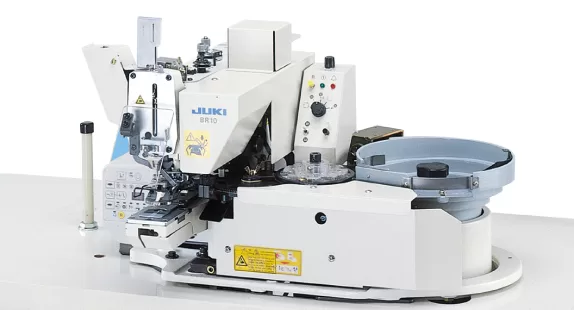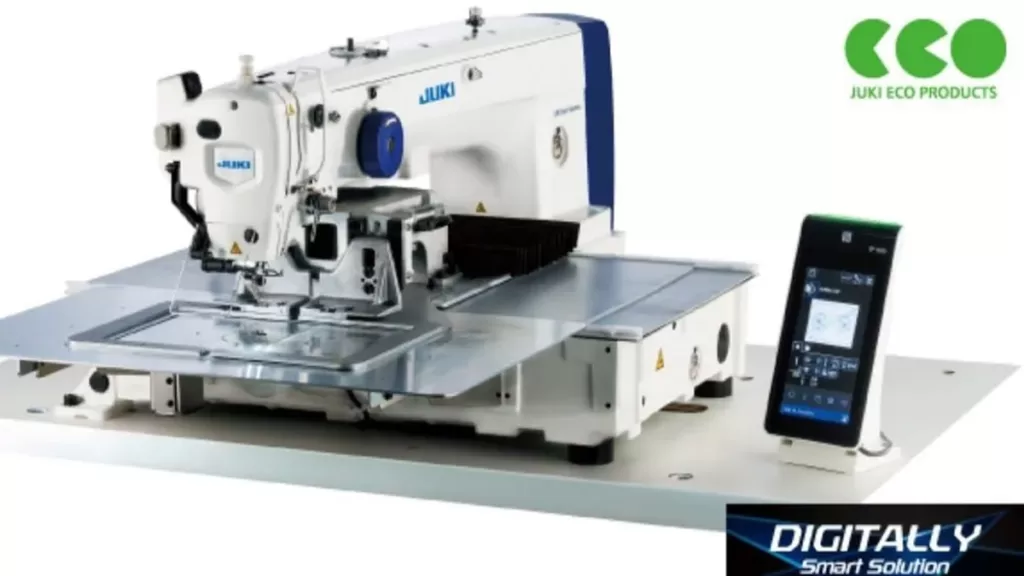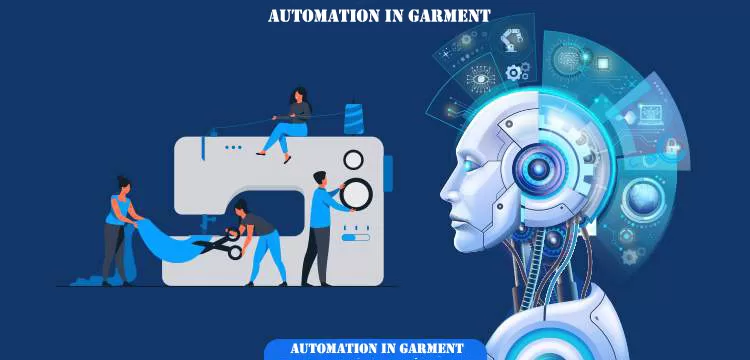The garment industry, with its rich history dating back over a century, is experiencing a groundbreaking transformation thanks to the profound impact of Sewing Automation Technologies in sewing production. While the sewing machine itself has been a marvel of engineering for generations, the garment industry has always grappled with the need for skilled operators, posing a perpetual challenge. However, this need for skilled labor is not unique to the garment sector; virtually all manufacturing industries rely on proficient personnel to maintain the delicate balance of efficiency and quality in mass production.
Sewing Automation Technologies is the linchpin of garment production, the very stage that breathes life into fabrics, transforming them into the final products that adorn us. Introducing industrial robots into this equation has proven to be a game-changer, offering unparalleled benefits in terms of both cost-efficiency and the quality of the end product. These remarkable machines, integrated with Sewing Automation Technologies, serve not only to enhance production efficiency but also to etch a distinct brand perception into the minds of consumers.
Now, let’s embark on a journey to explore the diverse technologies and robotics that are redefining the sewing assembly line.

Robotic 3D Sewing Technology: Crafting the Future of Garment Manufacturing
In the realm of cutting-edge technology, robotic 3D sewing is taking the lead and redefining the horizons of garment manufacturing. This innovative technology, pioneered by Philipp Moll GmbH & Co, ushers in the era of 3D sewing, revolutionizing the way garments are made. Designed to create trousers, shirts, jackets, and other staple garments using a 3D seam, this technology isn’t confined to traditional attire; it’s equally adept at crafting automobile textiles, including seat covers and airbags.
The 3D approach empowers manufacturers to produce items with unparalleled efficiency and superior quality. It’s a win-win scenario, offering reduced labor costs and lead times while significantly boosting productivity.
SEWBO and LOWRY SewBot: Robotics Redefining the Garment Industry
SEWBO and LOWRY SewBot, the remarkable robotic creations of the garment industry, have redefined the landscape of sewing. These ingenious automated robots, like SEWBO, introduced in 2015, are capable of single-handedly sewing an entire T-shirt. At the time of their inception, this was nothing short of a technological marvel.
These robots can be configured for specific sizes and styles, a remarkable feat that eliminates the need for reconfiguration every time the task changes. Once set up, they can sew complete T-shirts without any additional machines or equipment. This transformative automation significantly reduces the requirement for the three to four machines typically needed to sew a single T-shirt.
Revolutionizing the Garment Industry with Sewing Automation Technologies
The LOWRY SewBot, born in 2012, is a versatile machine designed for creating a wide range of clothing, capable of handling various fabric sizes and shapes. Leveraging computer vision and artificial intelligence, these SewBots perform an array of sewing activities, including fabric cutting, sewing, labeling, and inspection. All of these functions are seamlessly controlled via a touch panel integrated into the machine.
The prowess of these automated sewing machines is awe-inspiring, with diverse stitching patterns and the ability to halt the needle in an up or down position, rendering them highly versatile for clothing production. Notably, these machines can reduce the labor requirement by 50-70 percent. In terms of efficiency, a denim shirt produced using human labor for sewing costs $7.48 (In US), while with robots, it’s a mere $0.33.
Furthermore, robots can produce clothing at an astonishing pace, crafting 1100 T-shirts in just eight hours, a feat beyond the reach of human operators. Some ambitious tests in China even envision producing 800,000 T-shirts a day for global giants like Adidas, marking an engineering milestone. Research and development teams from various machine manufacturing companies are tirelessly working on similar Sewing Automation Technologies.
Automated Binding, Button, and Button-hole Sewing Machines: Precision at Its Best
The global market for garment accessories, such as binding, buttons, and buttonholes, is blessed with vital textile attaching and joining technology. Esteemed suppliers like Juki, Jack, Dürkopp Adler, Pegasus, and others produce a range of semi-automatic sewing machines that are readily available to offer advanced services and technologies to apparel manufacturers.
For instance, Juki boasts sewing machines that automatically attach buttons and create buttonholes, a leap forward in precision and efficiency. Rimac has crafted an automatic machine designed to elegantly finish curved corners on items like bedding and floor carpets. In addition, the Duerkopp Adler sewing machine is a marvel for sewing double-welt pockets. These machines simplify various sewing tasks, making the entire process vastly more efficient and precise.

Sewing Automation Technologies in Surging Machines: Stitching Innovations
Surging, the simple yet vital lock operation performed by machines, plays an indispensable role in stitching knitted garments, securing fabric edges, and preventing threads from unraveling. What sets Sewing Automation Technologies apart is its seamless integration into the trouser-making process.
In these specialized machines, a trouser pattern is fed into the system, which then proceeds to automatically overlock both edges of the pattern. Traditional methods involved sewing fabric edges separately, a time-consuming and labor-intensive process. Automation streamlines the operation, saving significant energy, time, and effort.
Automatic Computer-Controlled Cycle Machines: Revolutionizing Cycle Stitching with Sewing Automation Technologies
Cycle stitching is a prevalent operation in the apparel industry, traditionally demanding a fair amount of time and human labor. But the advent of automatic computer-controlled cycle machines has transformed this process. Equipped with a small box panel and a clamp for data entry and pattern securing, these semi-automatic systems handle specific sewing characteristics such as length, width, stitching path, and pattern placement. As a result, these machines can complete the fabric pattern quickly and efficiently with the help of Sewing Automation Technologies.

Automated Pocket-Attaching Machines: Streamlining Pocket Creation with Sewing Automation Technologies
The creation of pockets, a critical task in manufacturing trousers, jackets, T-shirts, and coats, traditionally demanded substantial human intervention. However, the integration of automatic pocket-attaching machinery has been a game-changer. These machines can seamlessly manage the sewing of three to four fabric layers while performing four to six different operations as needed. The result? Single-welt or double-welt pockets can be produced in just one minute, streamlining the entire production process with the aid of Sewing Automation Technologies.
Automated Belt-Loop Attaching Machines: Efficient Belt Loop Production with Sewing Automation Technologies
Traditionally, the attachment of belt loops in trousers and jeans represented a bottleneck area. Operators were tasked with producing the belt loop, cutting it to size, and then attaching it to the garment. However, this intricate process has been streamlined through the introduction of automatic belt-loop attaching machines. These remarkable machines shape and size belt loops while stitching, performing all these tasks in one fell swoop. This innovative automation not only saves time and labor costs but also minimizes errors with the help of Sewing Automation Technologies.
Sewing Machines with Automated Bobbin Changers: Ensuring Smooth Stitching with Sewing Automation Technologies
Among the diverse machinery mentioned in this article, there’s one special sewing machine equipped with an automatic bobbin changer. Operating on the principle of checking and replacing the bobbin during sewing, this machine keeps a close watch on the remaining thread. At a specific point, it swiftly replaces the bobbin with a fully loaded one using a robotic catcher. The automatic bobbin changeover feature of this machine not only enhances productivity but also reduces stitching problems and alleviates worker fatigue with the aid of Sewing Automation Technologies.
Buttonhole Indexer: Pioneering Precision in Sewing Automation Technologies
The buttonhole indexer, a fully computer-controlled marvel, takes center stage with its exceptional precision. Equipped with a single-panel box for data input and control, it factors in variables like hole distance, stitches per inch (SPI), buttonhole type, and other essential parameters. This specialized machine significantly boosts productivity and elevates the quality of buttonholing with the integration of Sewing Automation Technologies.
Benefits of Cutting and Sewing Automation: Crafting Excellence with Sewing Automation Technologies
Across all types of cutting and sewing automation, garment manufacturers reap a bountiful harvest of benefits that profoundly impact their productivity, efficiency, overall performance, and organizational profitability. Consider some of the following advantages:
Quality Enhancement: Sewing Automation Technologies in cutting and sewing leads to fewer defects in garments. With human intervention minimized, product quality improves, leading to reduced Defects Per Hundred Units (DHU) and smoother workflows.
High Capability Execution: Sewing Automation Technologies excels in multitasking, enabling the accomplishment of intricate tasks with greater ease and efficiency. The intense competition in the industry has prompted more garment manufacturers to embrace electronic devices, gadgets, and automation, a shift from traditional manufacturing that heavily relied on expert labor for intricate tasks.
Enhanced Productivity: Sewing Automation Technologies can skyrocket productivity and efficiency, up to 70 percent in some cases. Relying on manual labor often introduces the risk of errors, potentially leading to diminished quality and efficiency. Factors such as human fatigue and the necessary breaks taken by workers can further decrease individual output, subsequently affecting broader organizational productivity. By reducing dependence on manpower, Sewing Automation Technologies not only amplifies productivity but also aligns more closely with organizational goals.
Reduced Product Variability: Human involvement in production activities can introduce product variability. With Sewing Automation Technologies, variations within the same product category across different batches are minimized, leading to higher quality standards and a reduction in the need for rework activities.
Increased Inventory Turnover: Sewing Automation Technologies leads to increased productivity within the organization, resulting in higher total material turnover. In manual operations, raw materials, cut components, and semi-finished components often wait longer to be converted into the final finished garment. Therefore, Sewing Automation Technologies can improve inventory turnover.
The implementation of Sewing Automation Technologies in the garment sector bears a wide array of other benefits, including accelerated production, high-quality garments, reduced labor costs, shorter working hours, increased demand for skilled engineers, and more.
Conclusion: A Transformative Future for Garment Manufacturing
The garment industry is witnessing an extraordinary revolution, propelled by cutting and sewing technologies empowered by Sewing Automation Technologies. The integration of these advanced technologies has catapulted the industry into a new era, one characterized by speed, efficiency, and reduced reliance on manual labor. Sewing Automation Technologies has become the cornerstone of modern garment production, creating an environment where precision, productivity, and quality reign supreme. It is reshaping the very essence of the industry, making it more competitive and adaptable in an ever-changing global marketplace. The potential for further advancements in the global textile and garment industry is nothing short of promising, offering a future where innovation knows no bounds.
Also Read : 10 Benefits of Factory Automation for Garment Factories
Shop Floor Control (SFC) systems
5 thoughts on “Revolutionizing the Garment Industry with Sewing Automation Technologies. Unlock the Future of Fashion with Automation in Garment Industry! 🚀 Cont..-2”